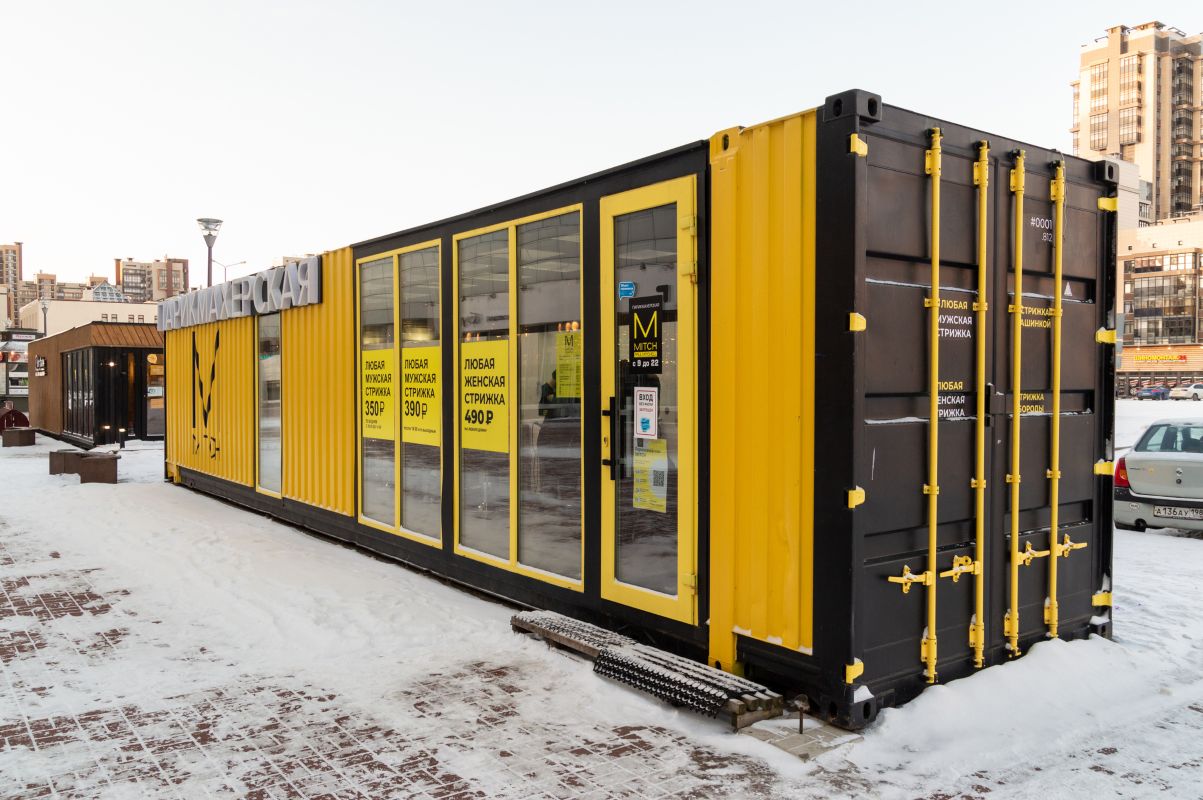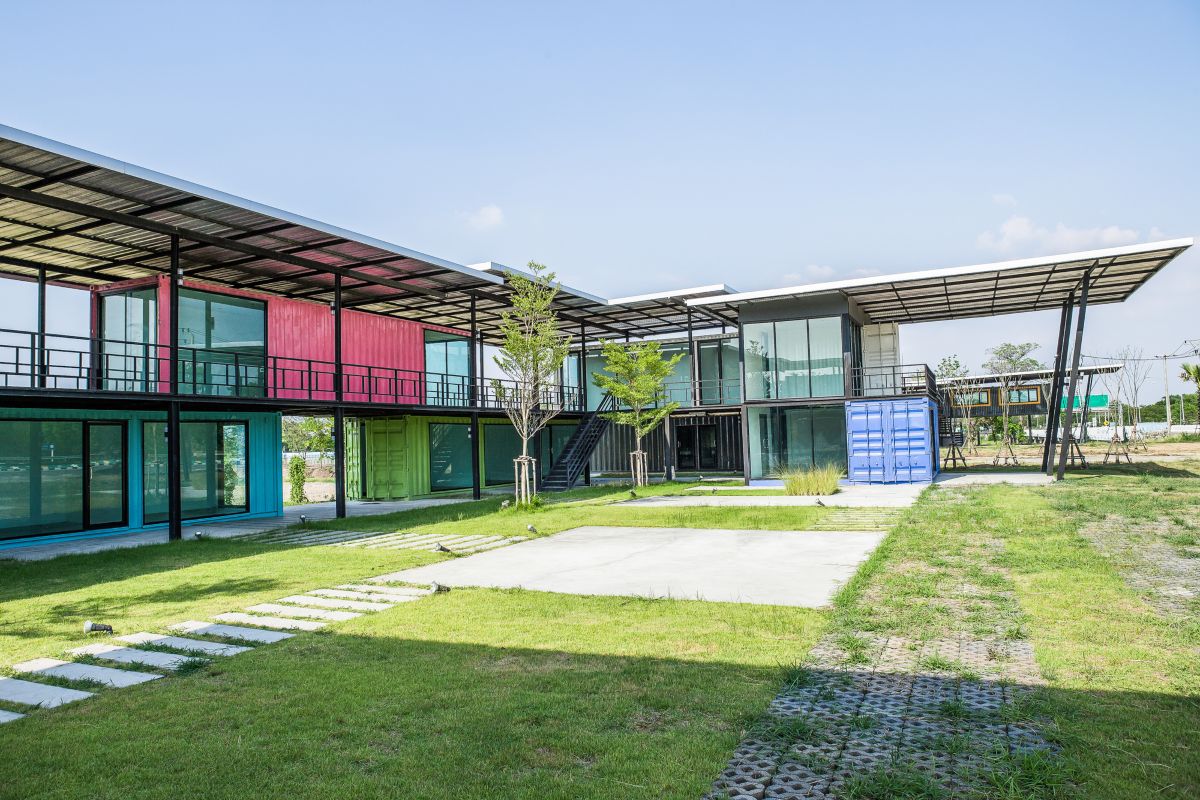Shipping containers, once just a simple means of transporting goods, have dramatically transformed their usage. They’ve been repurposed in numerous innovative ways, from housing and shops to hotels.
One trend gaining traction is using these robust steel boxes to create contemporary, eco-friendly office spaces. Whether you’re an entrepreneur searching for a unique workspace or an architect seeking an inventive design challenge, converting shipping containers might be your solution.
Now, if you’re hunting for a base material to kickstart your project, various suppliers have containers for sale. But before you jump in, you must know the intricacies and considerations of transforming these units into functional office spaces.
Benefits Of Using Shipping Containers

1. Cost-Effective Solution
Using shipping containers for office spaces is cost-effective, especially for new businesses or those looking to expand. The initial cost of purchasing containers for sale is relatively low compared to constructing a traditional office building.
Additionally, because containers are modular, adding or removing units as your business needs change is easy, saving you the expense of extensive renovations or building new structures.
2. Eco-Friendly Alternative
One of the key benefits of repurposing shipping containers for office spaces is their positive environmental impact. Giving these containers a new life contributes to sustainability efforts and reduces the demand for new construction materials.
This eco-friendly approach helps minimize waste and decreases the carbon footprint associated with traditional office construction.
3. Speedy Construction
Compared to traditional brick-and-mortar structures that can take months, setting up a shipping container office can be much faster. Since a substantial part of the office’s structure is already in place with containers, the construction timeline is significantly reduced.
With proper planning and the assistance of professionals, you can have your office up and running in weeks, saving valuable time and allowing you to focus on growing your business.
4. Aesthetic Appeal
Shipping container offices have a unique aesthetic appeal that can make them stand out from traditional office buildings. The industrial look of the containers adds a trendy and modern touch to your office.
When you incorporate modern design principles, such as windows, partitions, and creative finishes, you can create a professional and visually appealing workspace to impress clients and employees. The distinctive appearance of container offices can also serve as a conversation starter and help your business make a memorable impression.
Factors To Consider Before Conversion

1. Space Assessment
Before beginning the conversion process, assessing the available space and determining your office needs is crucial. Consider factors such as the number of workstations, meeting rooms, and amenities required for your business operations.
Based on this assessment, determine whether a single container will suffice or if you need multiple stacked or aligned containers to create the desired office layout and functionality.
2. Insulation Is Key
Shipping containers are made from metal, making them susceptible to extreme temperatures. Proper insulation is essential to ensure that your office remains comfortable year-round.
It helps regulate the internal temperature and prevents the container from becoming too hot in the summer or too cold in the winter. Adequate insulation will contribute to a more energy-efficient space, making it comfortable for employees and reducing the need for excessive heating or cooling.
3. Check Local Regulations
Before embarking on your container office transformation, checking and compiling with local building codes and regulations is crucial.
Each city or county may have specific requirements and permit processes related to modifications and safety standards for shipping container offices. Ensure you obtain the necessary permits and approvals before you begin the transformation to avoid any legal or compliance issues.
4. Professional Help Is Crucial
While converting a shipping container into an office space may seem straightforward, seeking professional help for various aspects of the process is essential. Experienced professionals can provide valuable guidance and expertise regarding electrical wiring, plumbing systems, and structural reinforcements.
They will ensure the safety and functionality of the converted office space, and their expertise can help you avoid any costly mistakes or potential hazards during the transformation process.
Collaborating with professionals will ensure a smooth and successful conversion of the shipping containers into a functional and safe office space that meets your requirements.
Designing Your Container Office
1. Open-plan Or Private Spaces
Before starting the transformation of your container office, decide on the layout that best suits your needs. Consider whether you prefer an open-plan workspace or individual cabins for privacy.
This choice will determine the design and modification requirements of the containers. An open-plan layout promotes employee collaboration and communication, while private spaces provide a secluded and focused work environment.
2. Natural Light
Due to being closed structures, shipping containers can lack natural light. Incorporating windows and skylights in the design of your container office is essential to provide ample natural light.
This creates a vibrant and pleasant workspace and reduces the need for artificial lighting, resulting in energy savings. Consider strategic placement of windows to ensure the optimal flow of natural light throughout the office.
3. Functional Furniture
Space constraints are often a consideration in container offices. Opt for functional and multi-purpose furniture to maximize utility without compromising on comfort. Modular desks, folding tables, and storage solutions can help optimize the use of limited space.
Think creatively to find furniture for multiple purposes, such as desks that come with built-in storage or seating options that can be folded and stored when not used.
4. Landscaping And Exteriors
Just because your office is made from shipping containers doesn’t mean it can’t have aesthetic appeal and outdoor elements. Consider adding a touch of green to your container office by including a small garden, planter boxes, or even a rooftop garden.
These landscaping elements can enhance the ambiance of the workspace and provide a pleasant break area for employees. Additionally, creating a cozy outdoor space like a patio or deck can serve as an office extension and allow employees to enjoy fresh air and a change of scenery.
5. Safety First
While shipping containers are known for their durability, the modifications made during the conversion process can compromise their structural integrity. It is crucial to prioritize safety when designing your container office. Ensure all modifications and structural changes, especially when stacking containers, are done safely and securely.
Install smoke detectors and fire extinguishers to ensure fire safety and proper ventilation to promote air circulation within the office. By prioritizing safety, you can create a secure and comfortable working environment for your employees.
Personalizing Your Container Office

1. Brand It
Personalizing your container office involves incorporating elements that align with your brand’s identity. Use colors, signage, and décor that resonate with your brand to give your office a professional touch.
This enhances the space’s aesthetics and reinforces your brand’s presence to visitors and clients. Incorporate your company logo, brand colors, and other visual elements that help convey your brand’s message and values.
2. Incorporate Technology
While the exterior may be a shipping container, the interior of your office can be as modern and technologically advanced as any traditional office. Ensure the necessary tech infrastructure is in place to support your business operations.
This includes providing reliable Wi-Fi connectivity, sufficient power outlets for electronic devices, and modern communication tools such as video conferencing or digital collaboration platforms. Adequate technology integration will ensure your container office is fully functional and equipped for the modern work environment.
3. Add Green Elements
To enhance the aesthetics of your container office and promote a healthier work environment, consider incorporating green elements such as indoor plants. Plants add a touch of nature to the steel environment and improve air quality by filtering pollutants and increasing oxygen levels.
Choose low-maintenance indoor plants that thrive in the office environment. Additionally, consider incorporating vertical gardens or living walls to maximize the use of space and create a visually appealing green feature.
4. Create Recreational Spaces
Promoting employee well-being and work-life balance is crucial for productivity and satisfaction. Create a small lounge or recreational area within your container office to avoid a monotonous work environment. This space can serve as a relaxation spot for employees during breaks or provide a venue for informal meetings and brainstorming sessions.
Furnish the area with comfortable seating, a few recreational activities like board games or a ping pong table, and ensure a welcoming ambiance. A designated recreational space encourages employees to take short breaks and recharge, increasing productivity and creativity.
Conclusion
Transforming shipping containers into office spaces is more than a trend; it’s a sustainable, cost-effective, and innovative solution for businesses of all sizes.
By keeping in mind the essential factors, from the initial design phase to personalizing the space, you can create a unique and efficient workspace.
Dive in, and you might just find that the ideal office you’ve been dreaming of has been waiting for you as a humble shipping container.
Read Also:
- How To Choose The Right HVAC Contractor For Your Office
- 7 Budget-Friendly Office Decorating Ideas For Your Small Business
- How To Design A More Inviting & Productive Office Space














